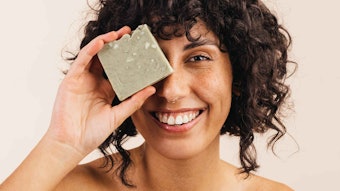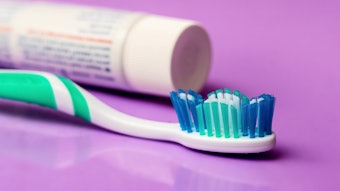The term cosmetic is all about appearance. The appearance of faces and smiles on pop culture idols often starts or ends trends in mainstream society. “You see those pop culture idols on the cover of People magazine, or you see them at the Academy Awards. They are all flashing their bright smiles,” said Nicholas Davis, DDS, president of the American Academy of Cosmetic Dentistry (AACD). He added that television shows such as Extreme Makeover in the United States expose the consumer to options and treatments available to them—from tooth bleaching and veneers to gum lifts and frenectomies*. “Companies are trying to feed off of this and we’re seeing it spread into consumer products like whitening strips and bleaching toothpastes and mouthwashes.”
Davis explained that the AACD aims to help the general dentist understand that function is important, but aesthetics go along with function. The cosmetics and cosmetic dentistry industries are closely linked by their basic aesthetic purposes and by pop culture trends.
Au Natural
The word natural serves an array of marketing purposes on product labels, from expressing a “look” to defining levels of ingredient processing. The trend for seeking natural things is long-lived and perpetuated by a general perception that natural means better. Thus, department stores continue to offer mineral- and plant-based products and makeup that presents a natural appearance.
In the same school of thought, the desire for natural has emerged in cosmetic dentistry. Historically, silver was used for dental fillings, according to Davis. However, the industry has seen a trend toward upgrading to resin or porcelain fillings. “The very first crowns were metallic,” explained Davis. “Then we started using gold, then porcelain baked on the gold, and now we’re using all ceramic.” He added that probably the biggest trend will be to go completely metal-free. “From all projections, within five or 10 years, more ceramic restorations will be done each year than metal restorations.”
With the baby boomer generation fighting to hang on to its youth, tooth whitening has become the number one procedure requested.
Against the Odds
Antiaging, antiwrinkle, antioxidant … consumers continue to fight against the odds of aging with skin and hair treatments designed to cover grey, blur expression lines or lighten sun damage. “Tooth whitening follows the antiaging trend,” said Davis. “I present a course for dentists called ‘Dentistry and the Aging Face,’ and the number one sign of the face looking old is yellow teeth.” With the baby boomer generation fighting to hang on to its youth, tooth whitening has become the number one procedure requested, according to Davis.
Whether a particular consumer seeks a natural, younger, lighter or darker look, new ingredients and techniques are being developed continually to integrate into cosmetics, personal care products and dental applications.
Making an Appearance
Formulas for thickening mascaras and shampoos, lip-plumping glosses or antiaging and brightening skin care products incorporate ingredients designed to produce specific effects. Reflectance pigments make wrinkles look less pronounced; stimulants stir circulation for plumping effects; and new nano-scale delivery systems are penetrating hair and skin for protection and repair purposes. As the methods and technology behind these treatments advance, meeting the needs of consumers becomes easier.
Creating the appearance of whiter, straighter teeth also has become easier as advanced methods and techniques are introduced to the dental industry. “Adhesive dentistry, which developed over the last 20 years, chemically bonds restorations to the teeth,” said Davis. “[This] has allowed us to do porcelain restorations, veneers, porcelain inlays and resin bonding without having to drill an area.” He added that perhaps one of the more interesting facts about this technology is that it originated from the aerospace industry.
The dental industry is seeing the emergence of genetics— research is underway to develop a vaccine for cavities.
Looking Sideways
Ideas from seemingly unrelated areas often spark creativity in the genius inventor and find their way into new industries. As mentioned above, in the aerospace industry, the material used to bond the ceramic material to the underside of the space shuttle wings is called siline. This coupling agent can bond porcelain to other surfaces.
“The spin-off technology from [siline] is what we use to put veneers on teeth and porcelain fillings in people’s mouths,” said Davis. “It is amazing how the aerospace and space shuttle industry has impacted cosmetic dentistry.”
DNA and genetics is another interesting field that is entering many markets. The dental industry is seeing the emergence of genetics. “Research is underway to actually develop a vaccine for cavities,” said Davis. In skin care, products can be produced from a sample collected from the inside of a client’s cheek, taking the customization of skin care to an ultimate level.
*A frenum is a fold of tissue or muscle connecting the lips, cheek or tongue to the jawbone; for example, the tissue attachment between the two front teeth. A frenectomy is the removal of one of these folds of tissue. This procedure can be performed to make teeth look straighter or lips look fuller.
 | Nicholas C. Davis, DDS, is a member of the American Dental Association, California Dental Association and Orange County Dental Association. He is the president of the American Academy of Cosmetic Dentistry, and a fellow in the International Academy of Dental Facial Esthetics. He has hosted and produced numerous television programs on oral health. Davis is the director of a diagnosis and treatment planning study club in Newport Beach, Calif., USA, and has lectured both nationally and internationally on cosmetic dental procedures and comprehensive dentistry. |










